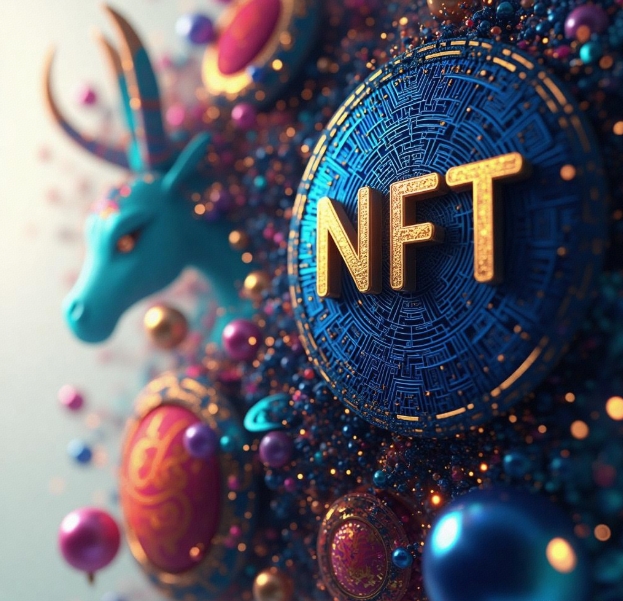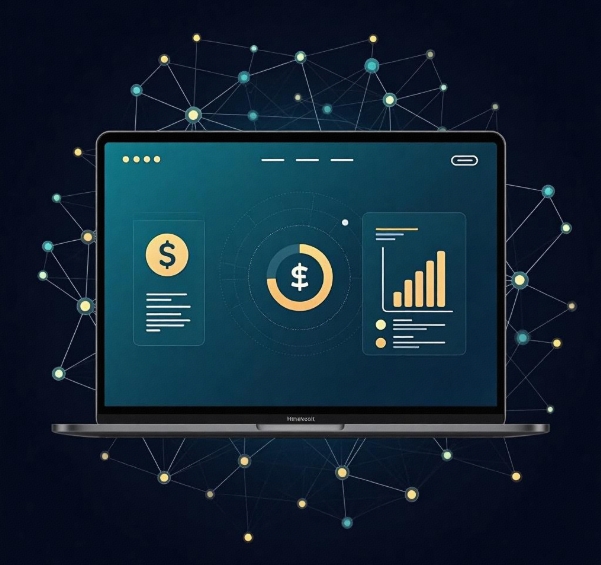Integration of DApp Development and NFTs: Digital Assets and Artworks
- latest articles
- 1.DApp Development & Customization: Merging Diverse Market Needs with User Experience 2.Analysis of the Core Technical System in DApp Project Development 3.How to achieve cross-chain interoperability in Web3 projects? 4.How does the tokenization of points reconstruct the e-commerce ecosystem? 5.How to Set and Track Data Metrics for a Points Mall? 6.What is DApp Development? Core Concepts and Technical Analysis 7.Inventory of commonly used Web3 development tools and usage tips 8.Development of a Distribution System Integrated with Social E-commerce 9.Six Key Steps for Businesses to Build a Points Mall System 10.What is DApp Development? A Comprehensive Guide from Concept to Implementation
- Popular Articles
- 1.Future Trends and Technology Predictions for APP Development in 2025 2.Analysis of the DeFi Ecosystem: How Developers Can Participate in Decentralized Finance Innovation 3.From Zero to One: How PI Mall Revolutionizes the Traditional E-commerce Model 4.DAPP Development | Best Practices for Professional Customization and Rapid Launch 5.Recommended by the Web3 developer community: the most noteworthy forums and resources 6.From Cloud Computing to Computing Power Leasing: Building a Flexible and Scalable Computing Resource Platform 7.How to Develop a Successful Douyin Mini Program: Technical Architecture and Best Practices 8.Shared Bike System APP: The Convenient Choice in the Era of Smart Travel 9.How to Create a Successful Dating App: From Needs Analysis to User Experience Design 10.From Design to Development: The Complete Process of Bringing an APP Idea to Life
In the widespread application of blockchain technology, decentralized applications (DApps) and non-fungible tokens (NFTs) have gradually entered the public eye as two important innovative concepts. The combination of DApp development and NFTs is opening up new possibilities for the creation, trading, and management of digital assets and artworks. This integration not only brings disruptive changes to the art world but also drives innovation and development across the entire digital asset ecosystem. This article will delve into the background, implementation methods, and applications of DApp development combined with NFTs in the fields of digital assets and artworks.
I. Basic Concepts and Background of DApp Development
Decentralized applications (DApps) are applications developed based on blockchain technology. Unlike traditional applications, they do not rely on centralized servers but instead use the blockchain network for data storage and management. The core characteristics of DApps are decentralization, high security, strong transparency, and immutability. Their application scenarios span multiple fields, including finance, gaming, social media, and art. Particularly in the management of cryptocurrencies and digital assets, DApps have demonstrated significant potential.
Blockchain technology inherently possesses the characteristics of decentralization, transparency, and immutability, enabling DApps to ensure data authenticity and security across various application scenarios. With the introduction of smart contracts, DApps can not only automatically execute predefined rules but also reduce intermediary costs and enhance user experience. Due to the decentralized nature of blockchain, DApps better align with modern society's demands for privacy and security.
II. Basic Concepts and Background of NFTs
Non-fungible tokens (NFTs) are unique digital assets issued on the blockchain, characterized by their uniqueness and non-fungibility, distinguishing them from traditional cryptocurrencies like Bitcoin and Ethereum. NFTs represent a form of digital ownership, with ownership information recorded and verified through smart contracts.
The uniqueness of NFTs lies in their ability to represent ownership and copyright of assets such as digital or physical artworks, music, videos, and in-game items. Through NFTs, creators can ensure the uniqueness of their works and establish immutable ownership records on the blockchain. This provides creators of digital artworks with new ways to convey value and offers investors new investment channels.
The application of NFTs is not limited to the art field; it also extends to industries such as gaming, sports, music, and copyright. Particularly in the digital asset space, NFTs are gradually emerging as an alternative to traditional digital currencies.
III. The Integration of DApps and NFTs: The Formation of a New Ecosystem
The integration of DApps and NFTs offers a more decentralized solution for the management, trading, and creation of digital assets. Traditional art transactions often rely on intermediaries such as galleries and auction houses, which typically charge high fees and face issues like information opacity and vulnerability to copyright infringement. With the rise of blockchain technology and NFTs, art transactions are gradually becoming decentralized, allowing artists and collectors to trade directly on platforms, reducing intermediary costs, and enhancing transaction transparency and security.
Through DApp platforms, NFTs can achieve decentralized creation, trading, purchasing, and auctioning. This process relies entirely on blockchain technology, ensuring transparency and traceability of copyright, ownership, and transaction history. For creators of digital artworks and other digital assets, this represents a significant opportunity, enabling them to easily issue, showcase, and sell their works on blockchain platforms while truly securing digital copyrights.
1. Creation and Issuance of NFTs on DApp Platforms
On DApp platforms, the creation and issuance of NFTs can be achieved through smart contracts. Artists can upload their digital artworks to the platform, generating a unique NFT that represents the ownership and copyright of the artwork, bound to the blockchain network via smart contracts. Once an NFT is issued, anyone can query its ownership information through smart contracts, ensuring the artwork's uniqueness and authenticity.
Compared to traditional art markets, DApp platforms offer artists greater transparency and lower transaction costs. Artists no longer need to rely on intermediaries like galleries or auction houses; instead, they can directly publish, trade, and transfer their works on blockchain platforms. This not only reduces operational costs for artists but also makes art transactions more efficient and decentralized.
2. Trading and Auctioning of NFTs on DApp Platforms
On DApp platforms, NFT transactions are typically automated through smart contracts. Smart contracts ensure transaction security and transparency, avoiding common issues like forgery and fraud in traditional art markets. Users can complete transactions simply by performing purchase and sale operations through the platform's smart contracts, eliminating the need for traditional third-party intermediaries.
NFT auction mechanisms have also gained widespread adoption. Some decentralized NFT marketplaces, such as OpenSea and Rarible, already offer auction features, allowing artists and collectors to auction their NFT works. On these platforms, users can set starting prices and bidding durations according to their needs, with the auction process executed via smart contracts. This decentralized auction approach makes the market fairer and more transparent while also stimulating user participation.
3. The Integration of NFTs and Digital Artworks
One of the standout features of NFTs is their ability to provide a new form of value representation for digital artworks. Traditional artworks typically exist in physical form, while digital artworks exist only as digital files, lacking clear ownership and copyright identification. The emergence of NFTs offers creators of digital artworks a convenient way to "crown" their works, ensuring uniqueness and copyright.
By combining digital artworks with NFTs, artists can not only gain broader exposure but also generate revenue through transactions on NFT platforms. This new approach to art trading breaks the limitations of traditional art markets and enables more creators to participate.
IV. Practical Cases of DApp and NFT Integration
1. CryptoKitties: A Classic Case of DApp and NFT Integration
CryptoKitties was one of the earliest blockchain-based decentralized applications to gain widespread attention. It combines DApps and NFTs, allowing users to purchase, breed, and trade virtual cats, with each cat being a unique NFT. The success of CryptoKitties demonstrated the immense potential of integrating DApps and NFTs, particularly in the fields of digital assets and virtual item trading.
Through CryptoKitties, users not only enjoy a decentralized trading experience but can also generate economic returns by collecting, breeding, and transferring virtual cats. The success of CryptoKitties has inspired more projects integrating DApps and NFTs, which have been applied in various fields such as gaming and art.
2. NBA Top Shot: An NFT Platform for Digital Basketball Cards
NBA Top Shot is a digital asset platform that combines NFTs with basketball culture. On NBA Top Shot, users can purchase, collect, and trade digital basketball cards, with each card being a unique NFT. Through the DApp platform, users can easily acquire their favorite basketball cards and trade them as digital collectibles.
The success of NBA Top Shot has led to the widespread application of NFTs in the sports industry. Through the DApp platform, users not only enjoy a decentralized trading process but also ensure the uniqueness and ownership of the cards. For the NBA and its fans, NFTs provide a new channel for fan interaction and bring new economic benefits to NBA culture.
V. Future Development of DApp and NFT Integration
With the continuous development of blockchain technology, the integration of DApps and NFTs will usher in more innovative applications. Beyond art, gaming, and sports, NFTs will play important roles in fields such as music, copyright, and real estate. The combination of DApps and NFTs not only provides creators with more ways to realize value but also offers investors more diversified investment channels.
As the concept of decentralization becomes more widespread, an increasing number of creators and users will choose decentralized platforms for creation and trading. The integration of DApps and NFTs will drive the flourishing development of the entire digital asset market. In the future, with ongoing technological advancements, the potential of DApp and NFT integration will become even greater, and the value representation of digital assets and artworks will become more diverse and complex.
Conclusion
The integration of DApp development and NFTs is providing a brand-new solution for the creation, trading, and management of digital assets and artworks. Leveraging the decentralized nature of blockchain technology, DApps and NFTs are not only transforming the operational methods of traditional art markets but also offering more opportunities and choices for creators and investors. As technology advances, the application scenarios for DApp and NFT integration will continue to expand, and the future of digital assets and artworks holds limitless possibilities.
-

DApp Development & Customization: Merging Diverse Market Needs with User Experience
As blockchain technology matures and becomes more widespread, decentralized appl···
-

Analysis of the Core Technical System in DApp Project Development
With the rapid development of blockchain technology, decentralized applications ···
-

What is DApp Development? Core Concepts and Technical Analysis
With the rapid development of blockchain technology, decentralized applications ···

 Blockchain
Blockchain












